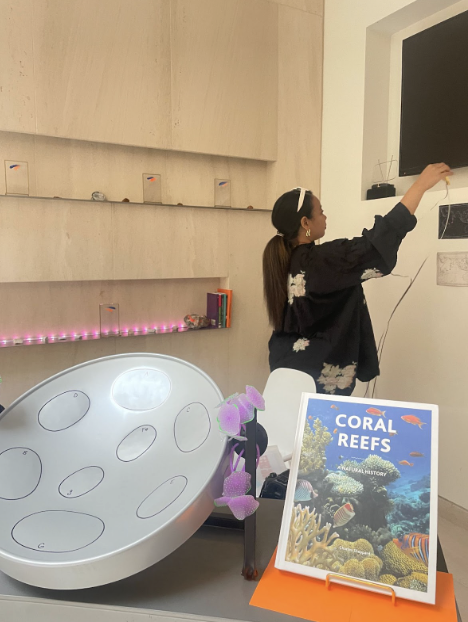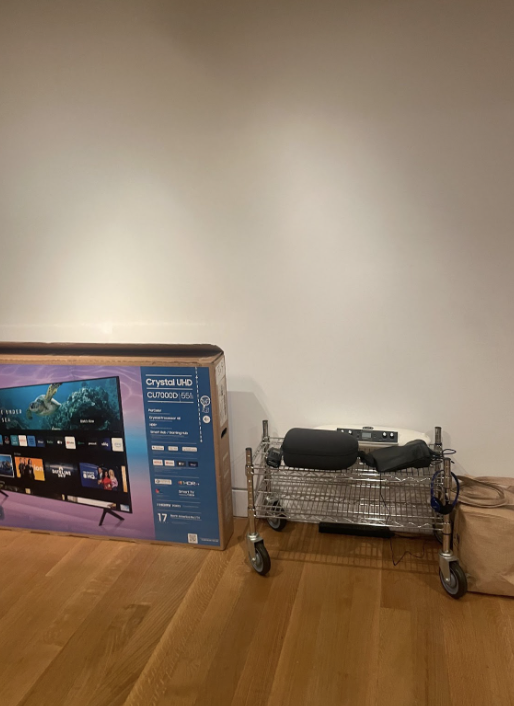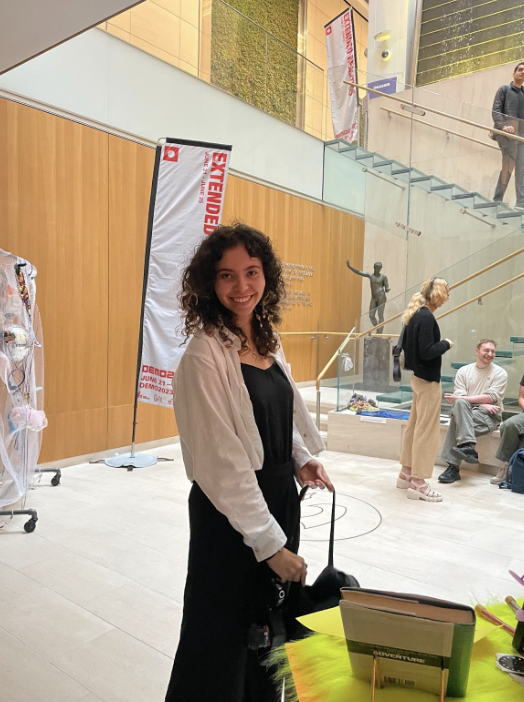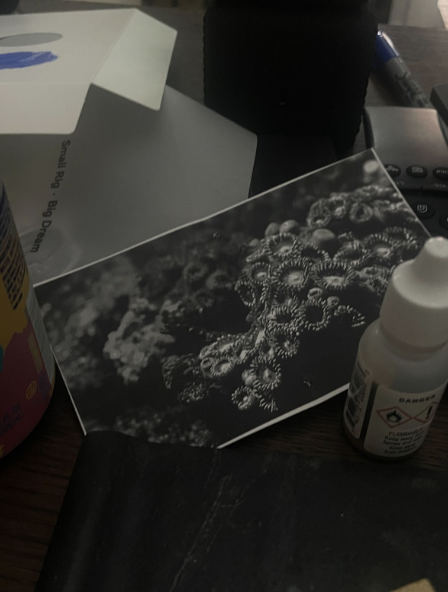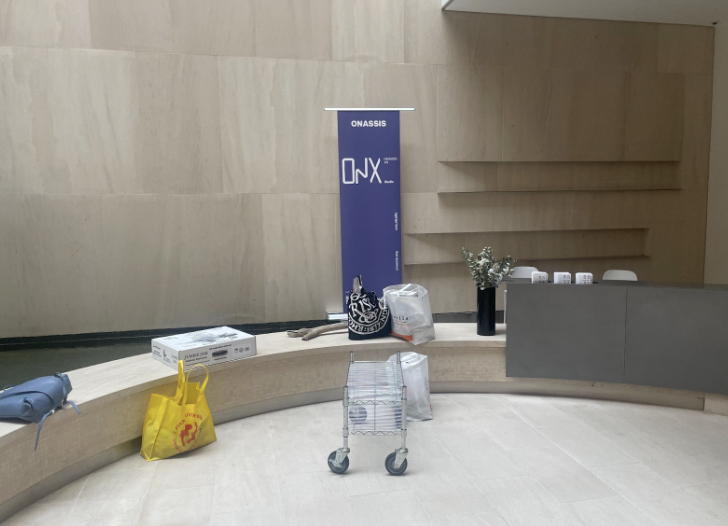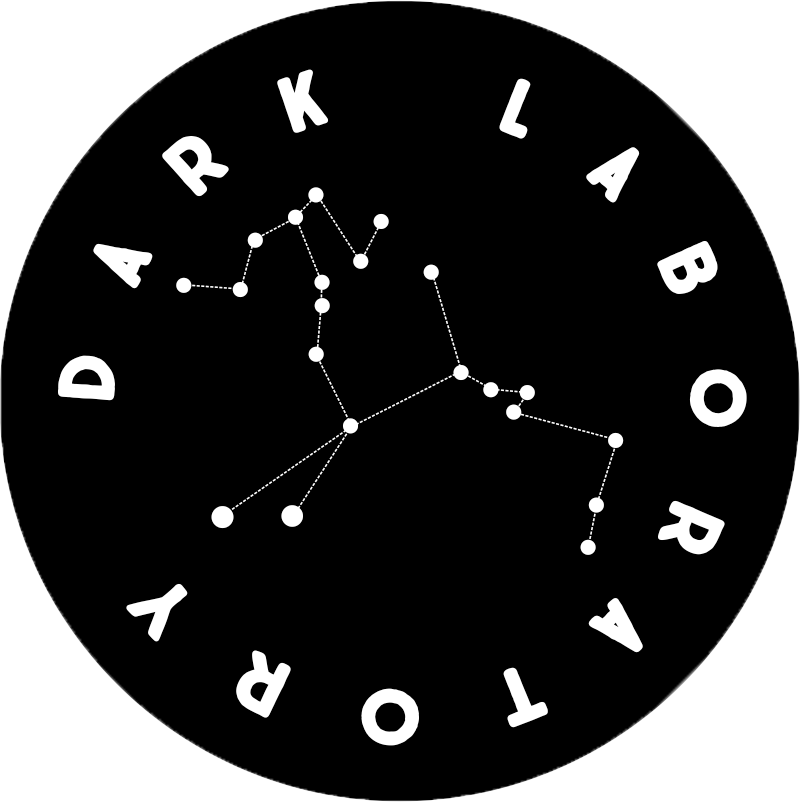Week 4/June 26-July 2, 2023
Kendall Greene
On Monday, we had to deinstall the exhibition, and I felt forlorn seeing the space empty again. The lobby space was filled with so much love, care, and life through the sounds, colors, and textures of the installation’s various elements. I am excited to see the next iteration of the project a year from now and so grateful that I was able to be a part of this version. I learned how to adapt and troubleshoot with sonic technology that shapes the space as well as improvise and help create a pleasurable atmosphere. After de-installation, I visited the MoMA for the first time and photographed all of the images that caught my eye. I was specifically focusing on African, Asian, and Indigenous storytelling. The rest of the week was completely remote which was definitely an adjustment. I miss being able to travel together and meet different people around the city, but I was able to learn about the importance of planning out my own excursions.
Spending most of my time in my apartment, I was able to go deeper with the work I was doing. I completed my first draft of a profile of Jenny Lau, the present chef-in-residence, and learned about the many hats she allows herself to wear. Her interview inspired me to remember the routines that ground me and dive back into cooking. As I re-listened to her interview conducted by sous-chef, Aree Worawongwasu, I was inspired to experiment with vegan recipes. I tried the Black-Eyed Peas and Okra Fritters deep-fried for the first time. This definitely was not a beginner recipe, but I had made too much batter, so I had the opportunity to improve over the following days. I love black-eyed peas and haven’t cooked them without my family before, which made this a great opportunity to connect to ancestral traditions with a curious twist.
By the end of the week, I also completed my first draft of dates for an Afro-Asia calendar. The intention of the calendar is to orient Afro-Asian intimacies, histories, and celebrations within time. In the interview with Jenny Lau, she and Aree contemplated the concept of Afro-Asia that is unrestricted to the various continents as it is found in the relationships between people of the diaspora. The calendar expands on this idea that Afro-Asia is not confined to physical space but can be embodied through time and reminders to celebrate and connect. My remote work this week offered me the space to be introspective and re-orient into the work I am doing this summer, and I am looking forward to being in physical space with Dr. Goffe, and Ariana, and meeting Maria in person for the first time.
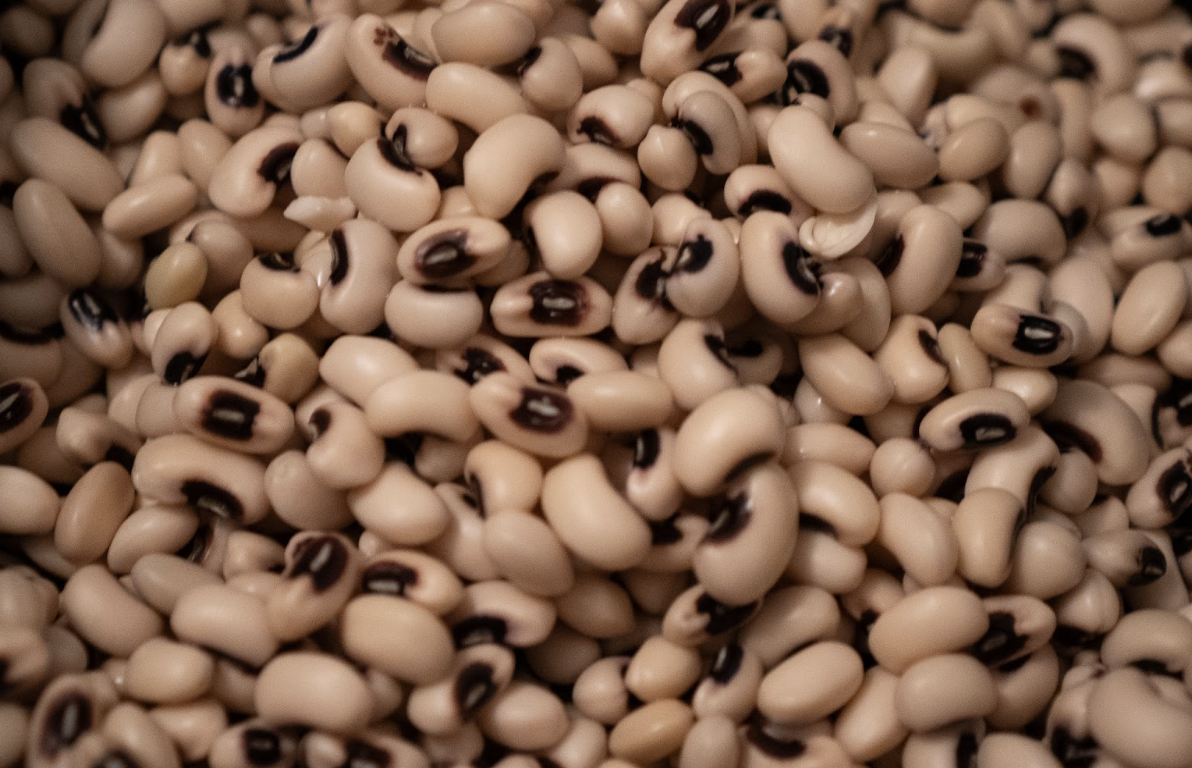
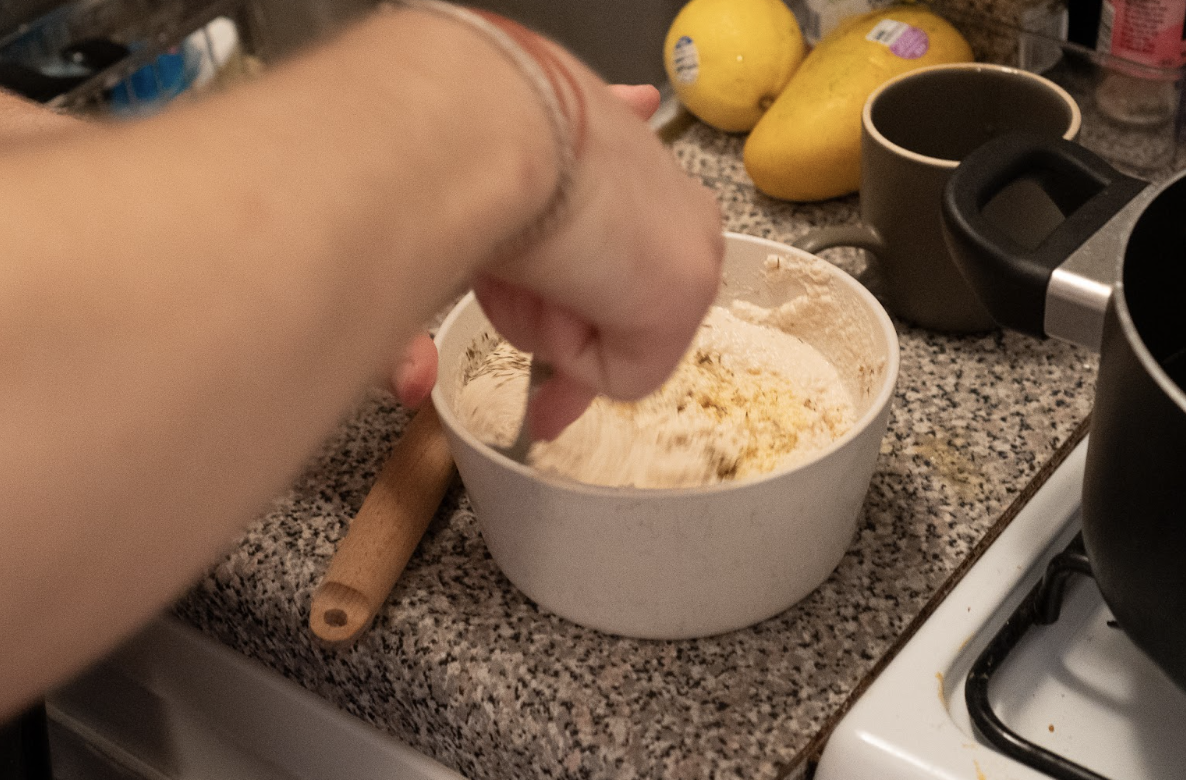
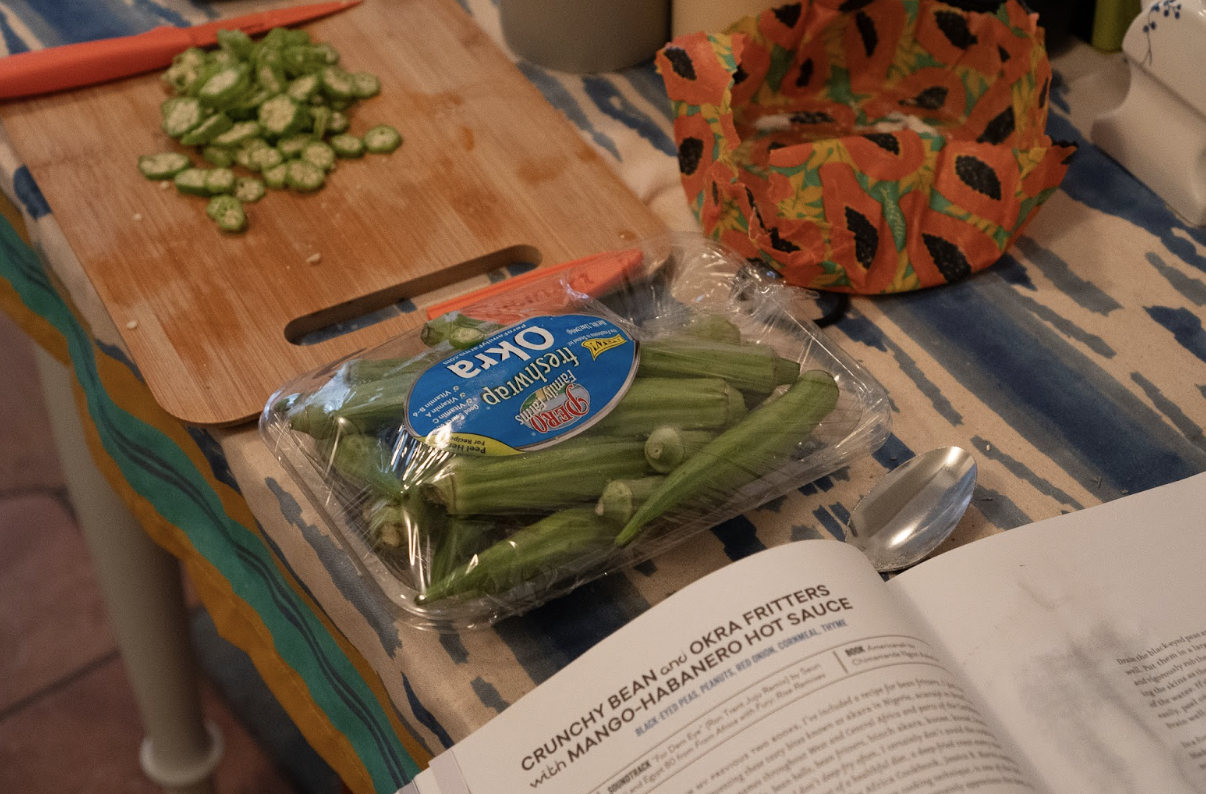
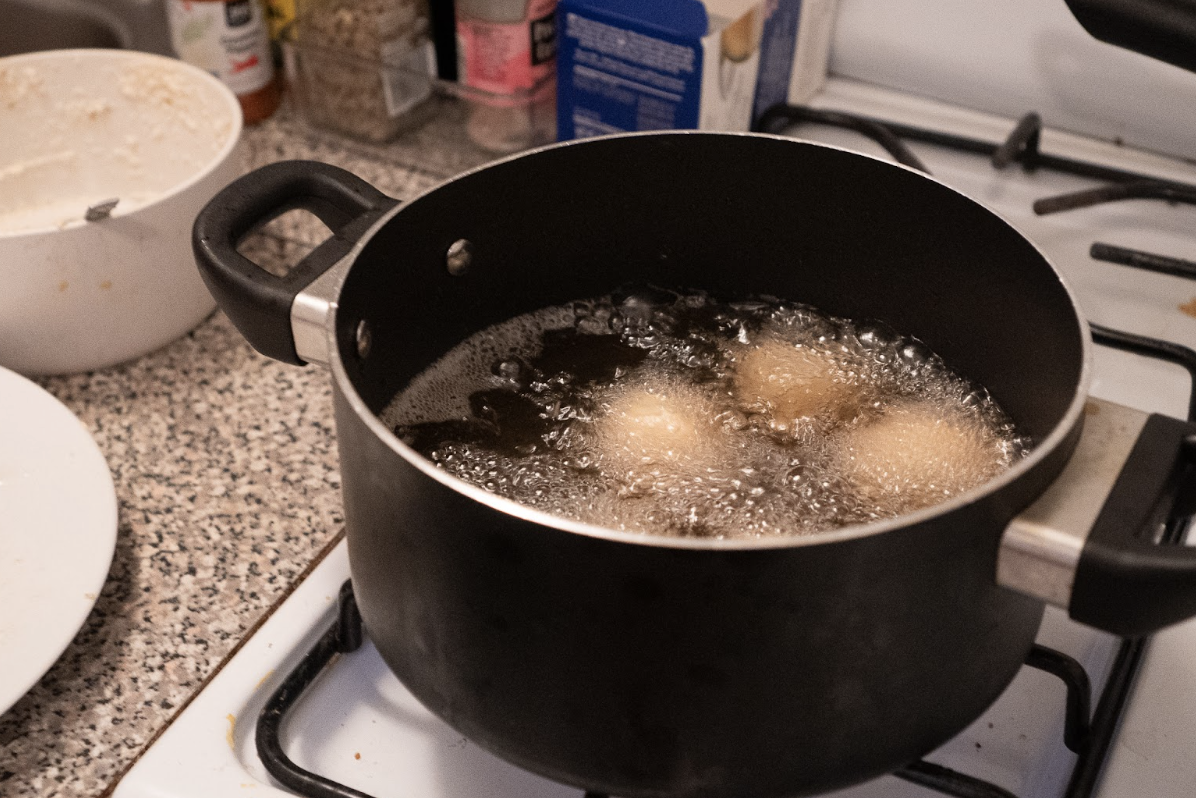


maria aguirre
This week at the New Museum, I attended a conversation between artist Mire Lee and exhibition co-curator Gary Carrion-Murayari to learn more about the new installation “Black Sun”. As I entered the quickly filling room, I tried my best to get a good seat, soon enough the doors closed and Mire Lee began talking about her work.
During the length of the conversation the thing that most stuck out to me was a recurring theme of the disgusting. At the time of the conversation I had never seen the exhibition, however soon enough I understood what disgusting could look and feel like. The scale of the disgusting work was impressive. Size for Mire Lee was part of the game. Playing with uncontainable energy. Pictures of the installation in the background of the conversation served as an interesting preview to what I would later see. In person it was crazy to say the least. The scale of the work was impressive and I could feel the uncontainable energy that was talked about. The level of work that this required was revealed during the conversion, but something that I found interesting was her enjoyment of labor. Part of her inspiration behind working with sculpture was the act of impressing. Labor intensive work that cannot fail to impress. To that, I have to say she did a remarkable job.
The disgusting element played in all the details. The size, labor, movement, and material. Using wet clay in her work meant that for the installation to be properly maintained throughout the exhibition it had to remain wet. The room built within the room did just that. As I entered through the lab like curtains, I felt the moist and warm air hit me. The smell of clay permeated the air. This installation played on all the senses in a cohesive experience. The humidity that hit my skin as I moved the plastic drapes, the smell of wet clay, the taste of the air forcing its way into my system, the sound of machines whirring, and the incredible sight of the installation itself. It was horrible. (I don’t mean that in a negatively critical way.)
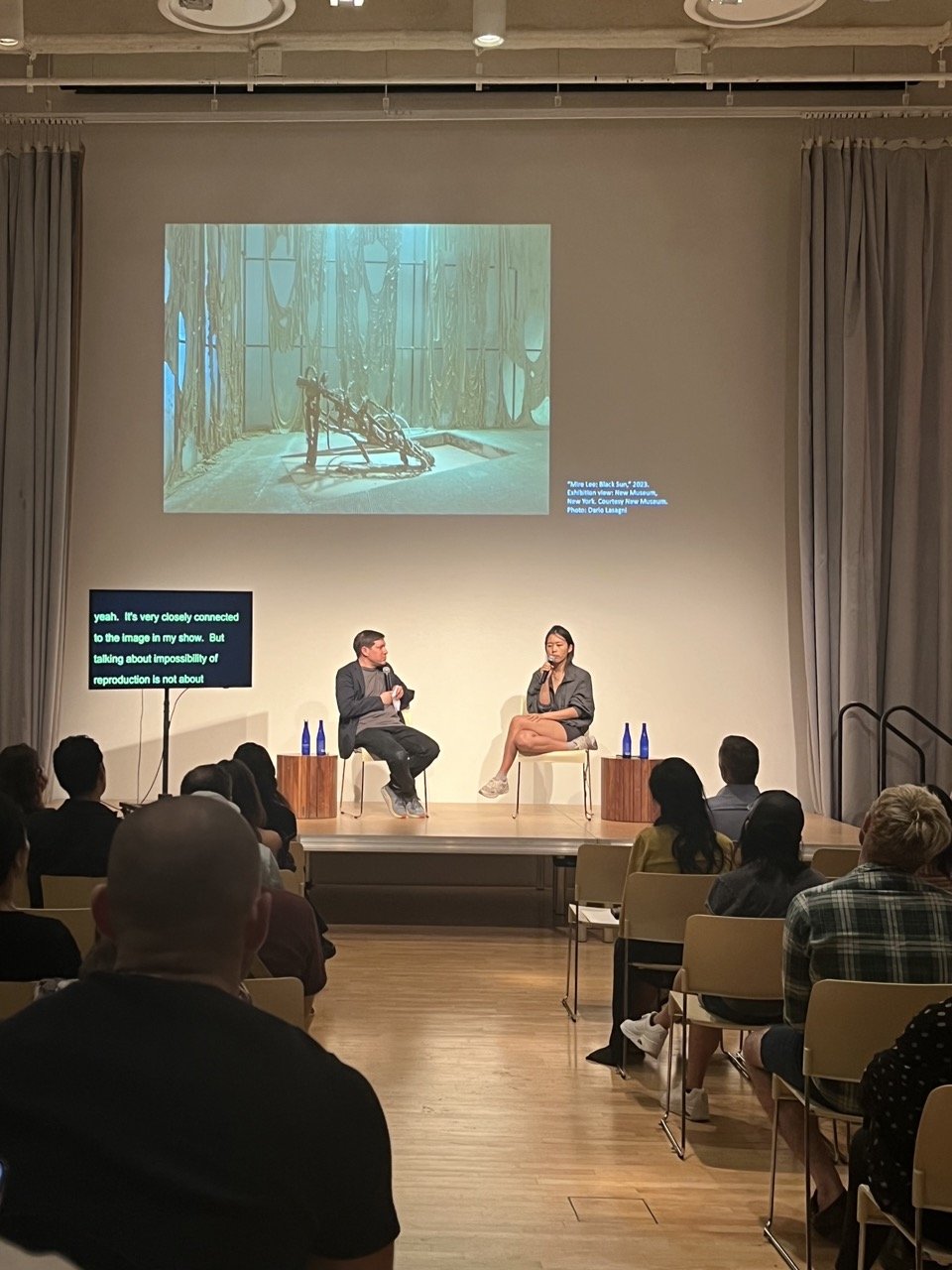
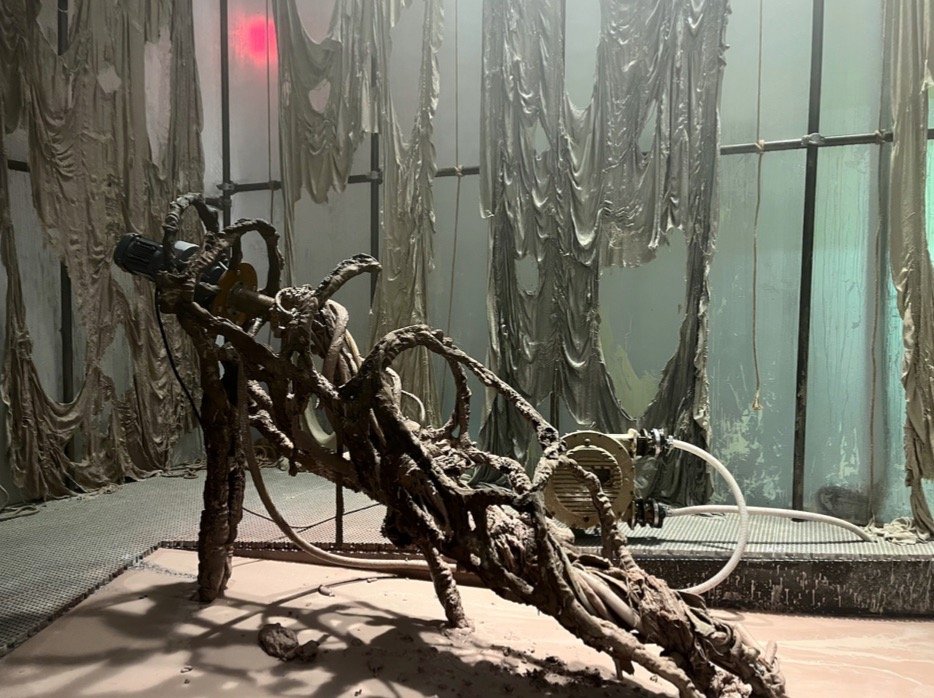
Ariana White
It was special to be a part of Dr. Goffe's 2023 demo exhibition “Coralline Frequencies” at NEW INC, the incubator of the New Museum. Nestled beneath the ground floor of the Olympic Tower in midtown, is a technology and design studio focused on XR and AR engagement as artistic practice. As part of the New Inc. “Extended Realities Track,” Dr. Goffe incorporated sound, visuals, literature, and music to create a multidimensional space that educates and advocates for attention on coral reef species as members of the Caribbean diaspora.
Fellow intern Kendall Greene and I visited Dr. Goffe’s home in NYC where she spent most of her time in preparation for this exhibition. We were allowed insight into her creatives and given specific installation tasks and responsibilities for the three days Dr. Goffe used to organize each aspect of her exhibition. Her dining room table held black and white images of coral reefs alongside anaglyphs of corals, full of life and color. We packed seemingly distinct items and transported them to the Onassis Gallery where they would be transformed into parts of a larger educative message about the climate crisis, Caribbean ecologies, and the lasting effects of transatlantic racial injustice.
Through her research, Dr. Goffe views coral species as ancestors and witnesses to generations of life on earth specifically, the injustice done towards Black and brown bodies. Corals are strong communal living animals cemented to the earth’s seafloor creating diverse ecosystems for fish, aquatic vegetation, and microscopic phytoplankton. They are ecosystem engineers changing the makeup of their environments to best suit their access to nutrition and oxygen. Coral species exist at the nexus of animal and plant life, as they utilize the sun for glucose synthesis yet require external food sources. As oceans warm, due to excess CO2 emissions around the world, corals lose the necessary algae they need to survive and which contributes to their coloring. We are left with bleached coral reefs and the decimation of prime environments for aquatic life.
